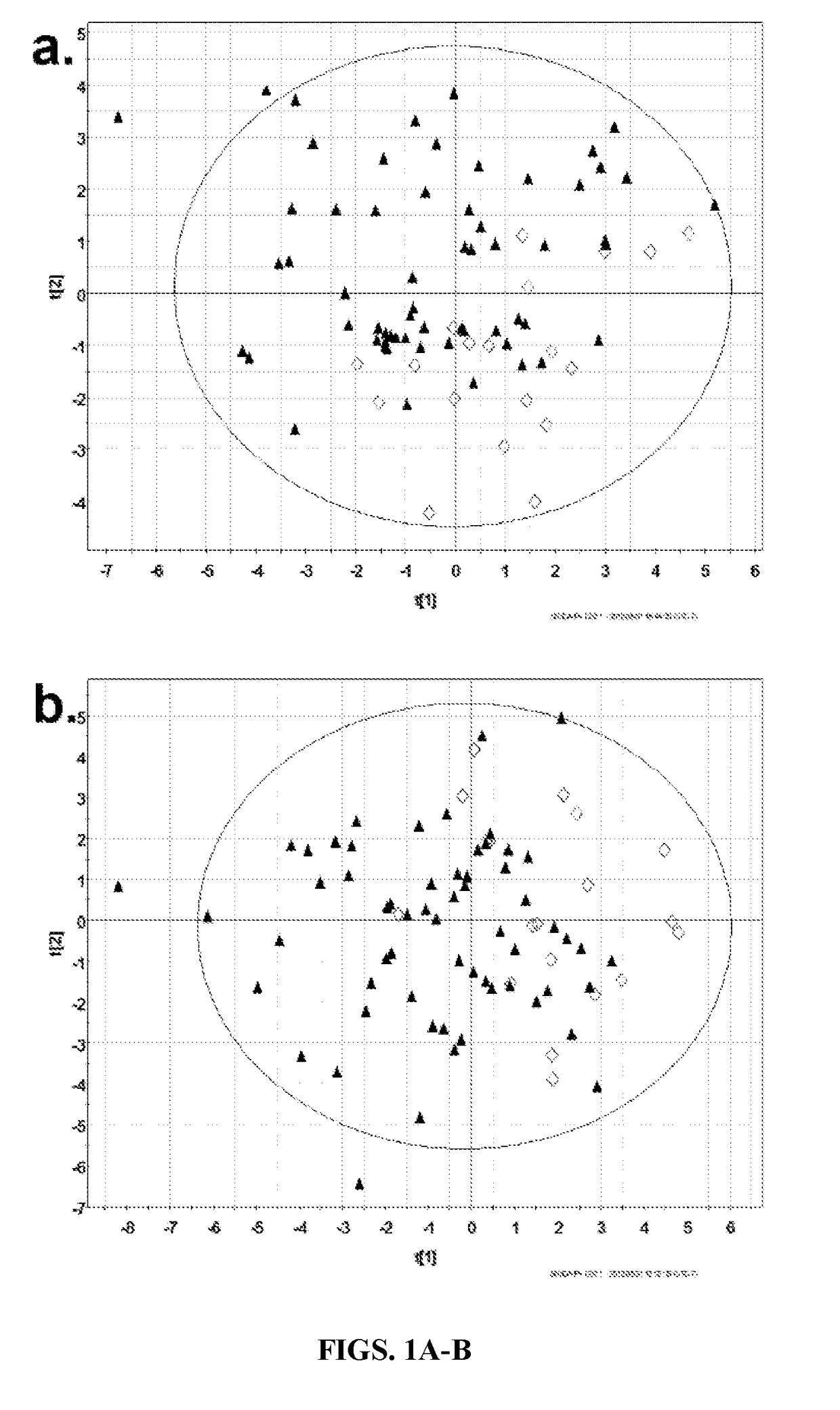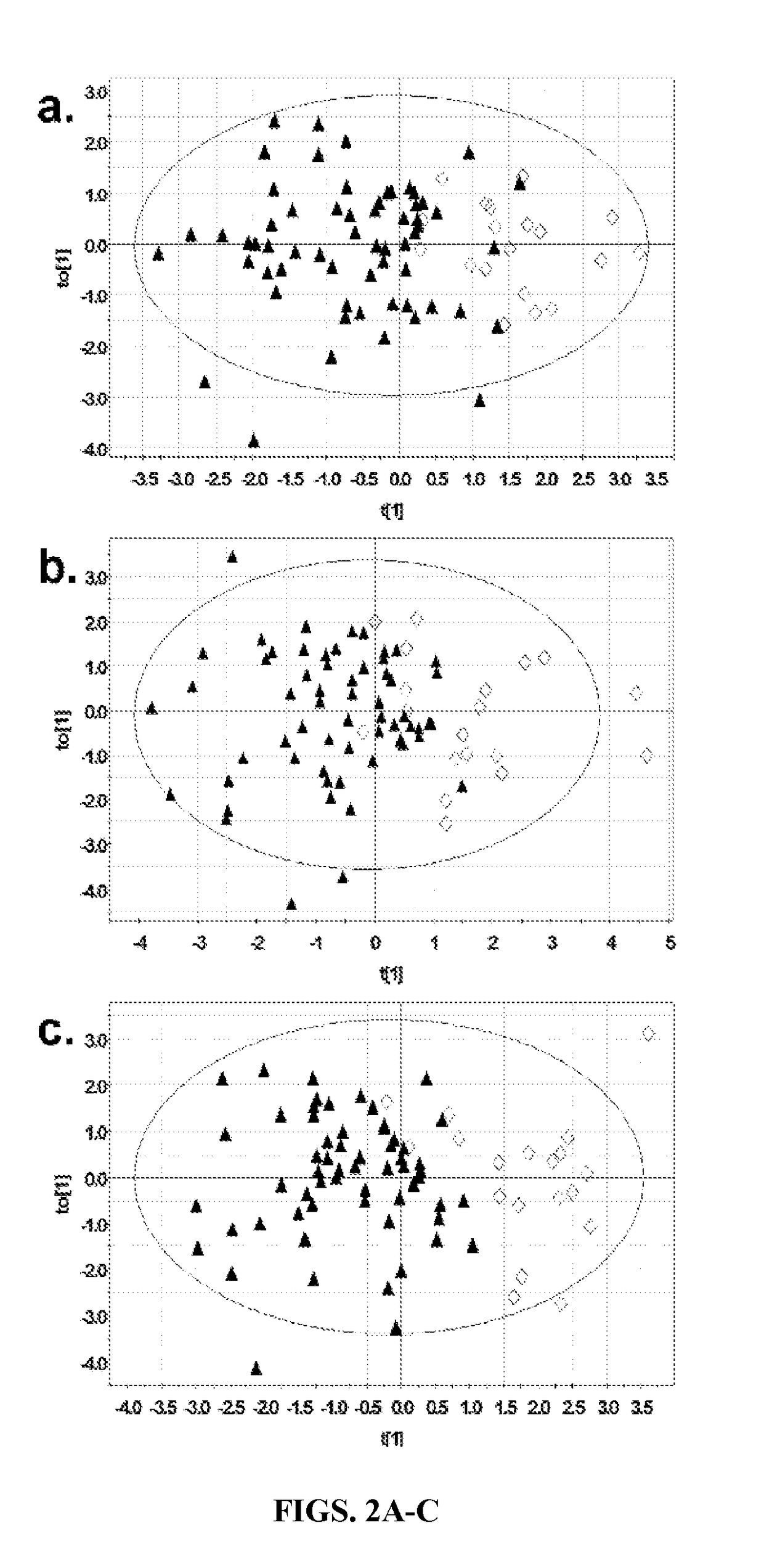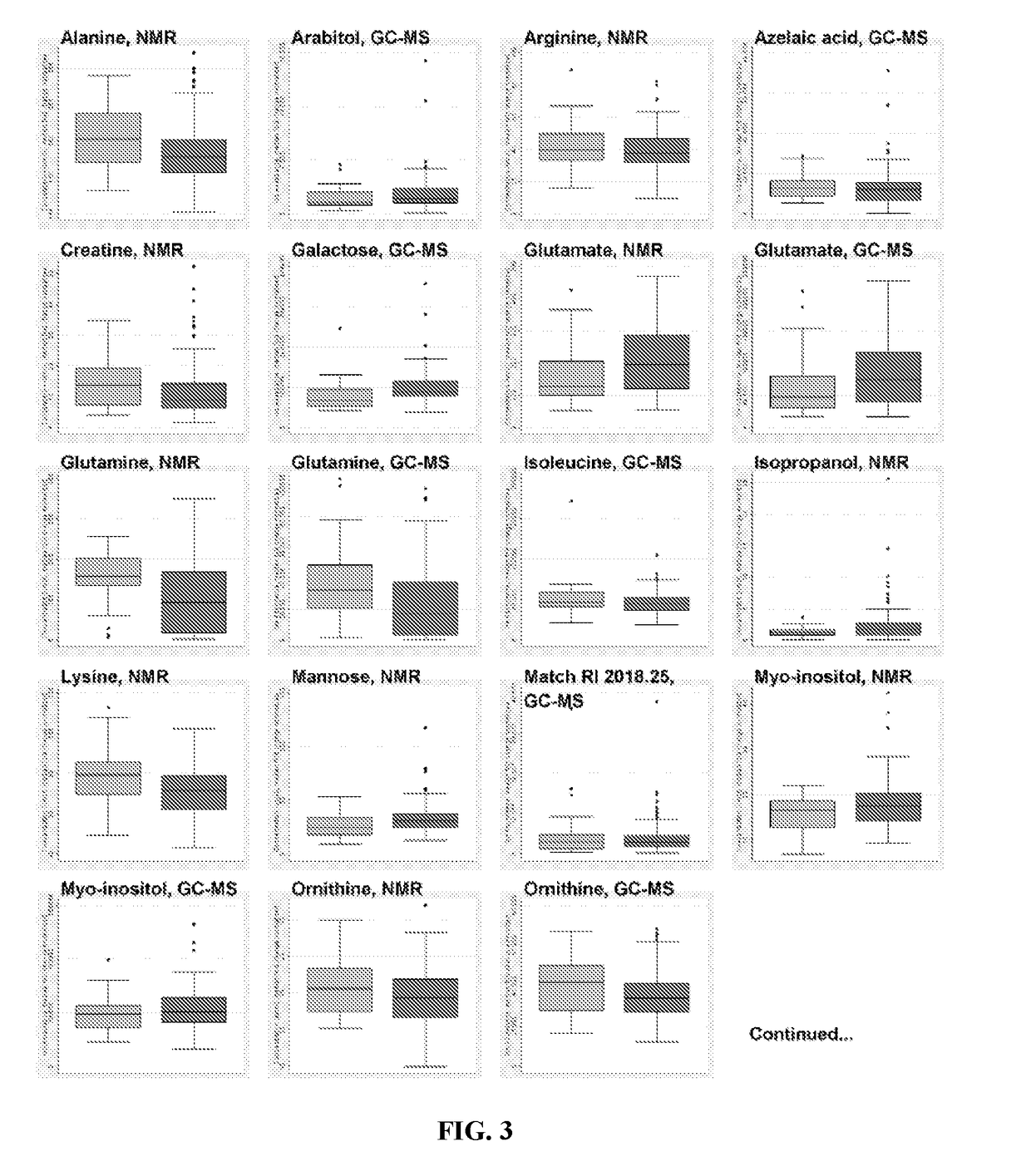Metabolomics for diagnosing pancreatic cancer
a technology of metabolomics and pancreatic cancer, applied in the field of biochemistry, molecular biology, medicine, can solve problems affecting their outcom
- Summary
- Abstract
- Description
- Claims
- Application Information
AI Technical Summary
Benefits of technology
Problems solved by technology
Method used
Image
Examples
example 1
Materials and Methods
[0144]Serum Samples. Venous blood samples were obtained from 157 patients who had a pancreatic or periampullary lesion on diagnostic imaging. All patients provided informed consent for study participation and the study was approved by the Conjoint Health Research Ethics Board at the University of Calgary (IRB #E20846). All patients were fasting for at least 8 hours at the time of sample collection.
[0145]For patients not undergoing surgical resection, samples were collected at a licensed laboratory collection facility. For patients undergoing surgical resection, samples were collected on the day of surgery, prior to any surgical manipulation. Serum samples were collected and stored as previously described (Bathe et al., 2011).
[0146]Patient Data. For all patients, clinical data were collected prospectively as part of the serum banking process, using standardized forms. Each patient was classified as having either a malignant or a benign pancreatic / periampullary le...
example 2
Results
[0155]Demographic and technical factors. For each of the three separate randomized allocations to the 50:50 split, the training group contained 80 patient samples, and the test group contained 77 patient samples. Clinical and technical factors appeared evenly distributed for each allocation (Table 1).
[0156]Principal component analysis. On PCA modeling, no marked latent structures were identified and no sample was a consistent outlier across allocation trials. Several models showed some degree of separation between malignant and benign samples in component 1 or 2 (FIGS. 1A-B).
[0157]Orthogonal multivariate projection modeling. Table 2 summarizes the results of modeling for the 1H-NMR spectroscopy, GC-MS and Combined datasets, and FIGS. 2A-C display the respective scores plots. These results indicate the ability of metabolites from these three datasets to distinguish malignant versus benign lesions in training sets of 80 patient samples, with independent validation in test sets ...
example 3
Discussion
[0161]Focused metabolomic profiles, containing as few as 14-18 metabolites, can discriminate between serum samples from patients with malignant versus benign pancreatic / periampullary lesions. The training set, these focused metabolomic profiles produced OPLS-DA models with R2 values of 0.30-0.48, indicating that 30-48% of the observed variance in metabolite levels was attributable to the diagnostic classification. These values are in the range expected for clinical specimens (Fiehn et al., 2010), are in keeping with the clustering of samples by diagnostic category seen in the first and second components of unsupervised PCA, and were sufficient to statistically discriminate between diagnostic classes as indicated by the CVANOVA p-values.
[0162]The metabolomic profile of malignant versus benign lesions was validated in separate test sets with AUROC values of 0.62-0.74. This level of performance is similar to that of the widely used serum tumor marker CA 19-9, suggesting that ...
PUM
 Login to View More
Login to View More Abstract
Description
Claims
Application Information
 Login to View More
Login to View More - R&D Engineer
- R&D Manager
- IP Professional
- Industry Leading Data Capabilities
- Powerful AI technology
- Patent DNA Extraction
Browse by: Latest US Patents, China's latest patents, Technical Efficacy Thesaurus, Application Domain, Technology Topic, Popular Technical Reports.
© 2024 PatSnap. All rights reserved.Legal|Privacy policy|Modern Slavery Act Transparency Statement|Sitemap|About US| Contact US: help@patsnap.com










